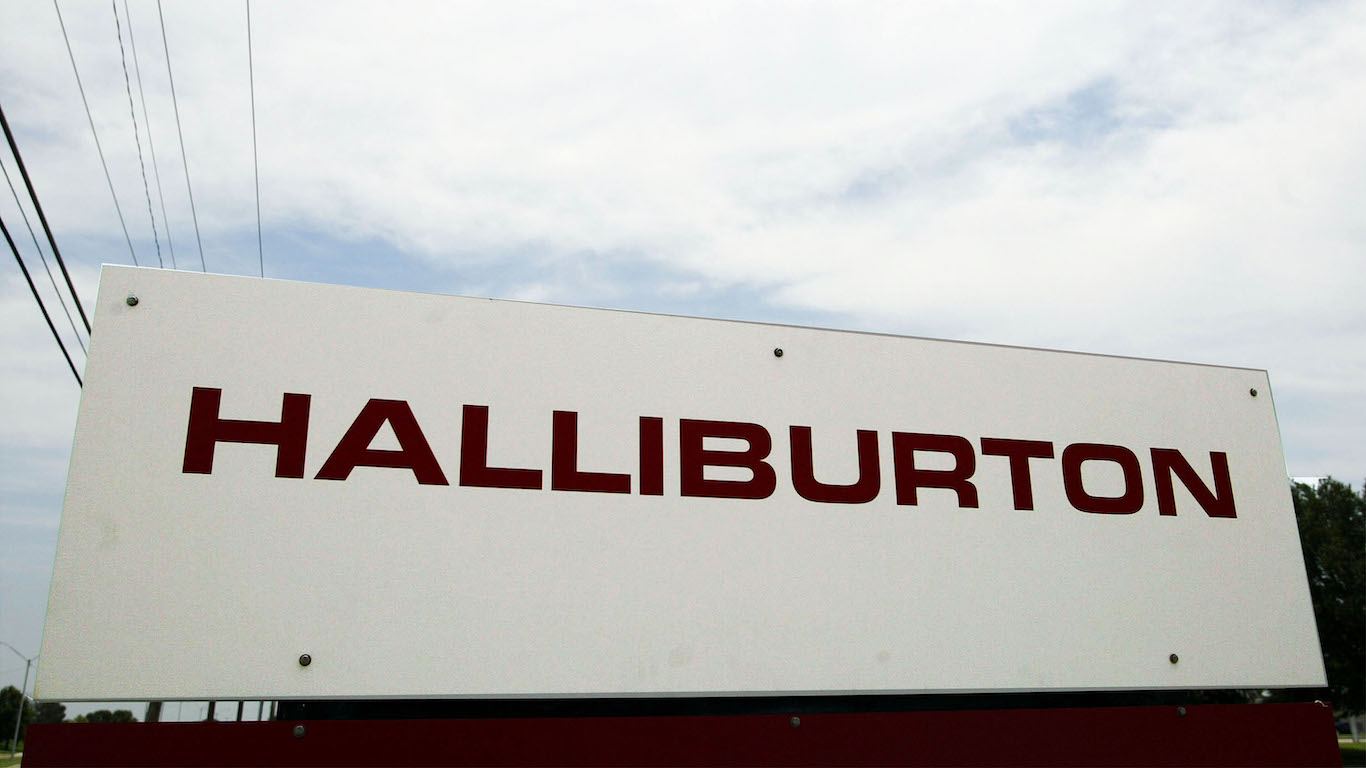
When Halliburton Co. (NYSE: HAL) reported first-quarter 2019 results before markets opened Monday, the oil and gas services company posted adjusted diluted earnings per share (EPS) of $0.31 on revenues of $5.04 billion. In the same period a year ago, the company reported EPS of $0.23 on revenues of $5.74 billion. First-quarter results also compare to consensus estimates for EPS of $0.24 per share and $5.01 billion in revenues.
With crude oil dropping below $15 a barrel early Monday, Halliburton stock had given up about a quarter of its Friday gain of 13.6% before it released its earnings report. The company offered no guidance but did say this: “For the remainder of 2020, the Company expects a further decline in revenue and profitability, particularly in North America.”
On a GAAP basis, Halliburton posted a quarterly net loss of $1.0 billion ($1.16 per share), compared to net income a year ago of $152 million, or $0.17 per share. Excluding impairments and other charges, adjusted operating income was $502 million in the first quarter of 2020, an 18% increase from adjusted operating income of $426 million in the first quarter of 2019.
Adjusted net income for the quarter totaled $270 million and excludes $1.1 billion in pretax impairment charges. The charges were primarily noncash asset impairments. The company also recognized a noncash tax expense of approximately $310 million for an adjustment to its deferred tax assets. In the fourth quarter, Halliburton took a $2.2 billion impairment charge.
Chair and CEO Jeff Miller said:
Our industry is facing the dual shock of a massive drop in global oil demand coupled with a resulting oversupply. Consequently, we expect activity in North America land to sharply decline during the second quarter and remain depressed through year-end, impacting all basins. Internationally, we believe the activity changes will not be uniform across all markets. OPEC+ production decisions and the duration of pandemic-related demand and activity disruptions will ultimately determine the extent of international spending declines this year. … We are taking swift actions to reduce overhead and other costs by approximately $1 billion, lower capital expenditures to $800 million, and improve working capital. We will take further actions as necessary to adjust to evolving market conditions.
North American revenue rose by 5.4% sequentially and fell by 25% year over year. International revenue rose by 5% year over year.
The consensus analyst estimates for the second quarter call for a loss per share of $0.01 and revenues of $4.06 billion. For the fiscal year, analysts are looking for EPS of $0.03 and revenues of $16.34 billion.
In Monday’s premarket session, Halliburton stock traded down about 4.4% to $7.25 after closing Friday at $7.58. The stock’s 52-week range is $4.25 to $32.09, and the consensus 12-month price target is $9.57.
Halliburton currently pays a dividend of $0.72 annually (yield of 10.79%).
Get Ready To Retire (Sponsored)
Start by taking a quick retirement quiz from SmartAsset that will match you with up to 3 financial advisors that serve your area and beyond in 5 minutes, or less.
Each advisor has been vetted by SmartAsset and is held to a fiduciary standard to act in your best interests.
Here’s how it works:
1. Answer SmartAsset advisor match quiz
2. Review your pre-screened matches at your leisure. Check out the advisors’ profiles.
3. Speak with advisors at no cost to you. Have an introductory call on the phone or introduction in person and choose whom to work with in the future
Get started right here.
Thank you for reading! Have some feedback for us?
Contact the 24/7 Wall St. editorial team.



